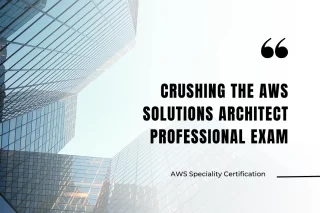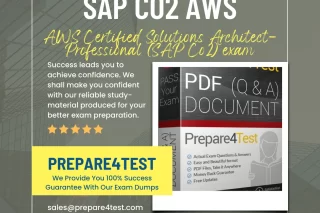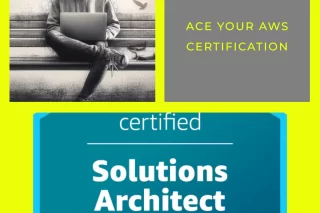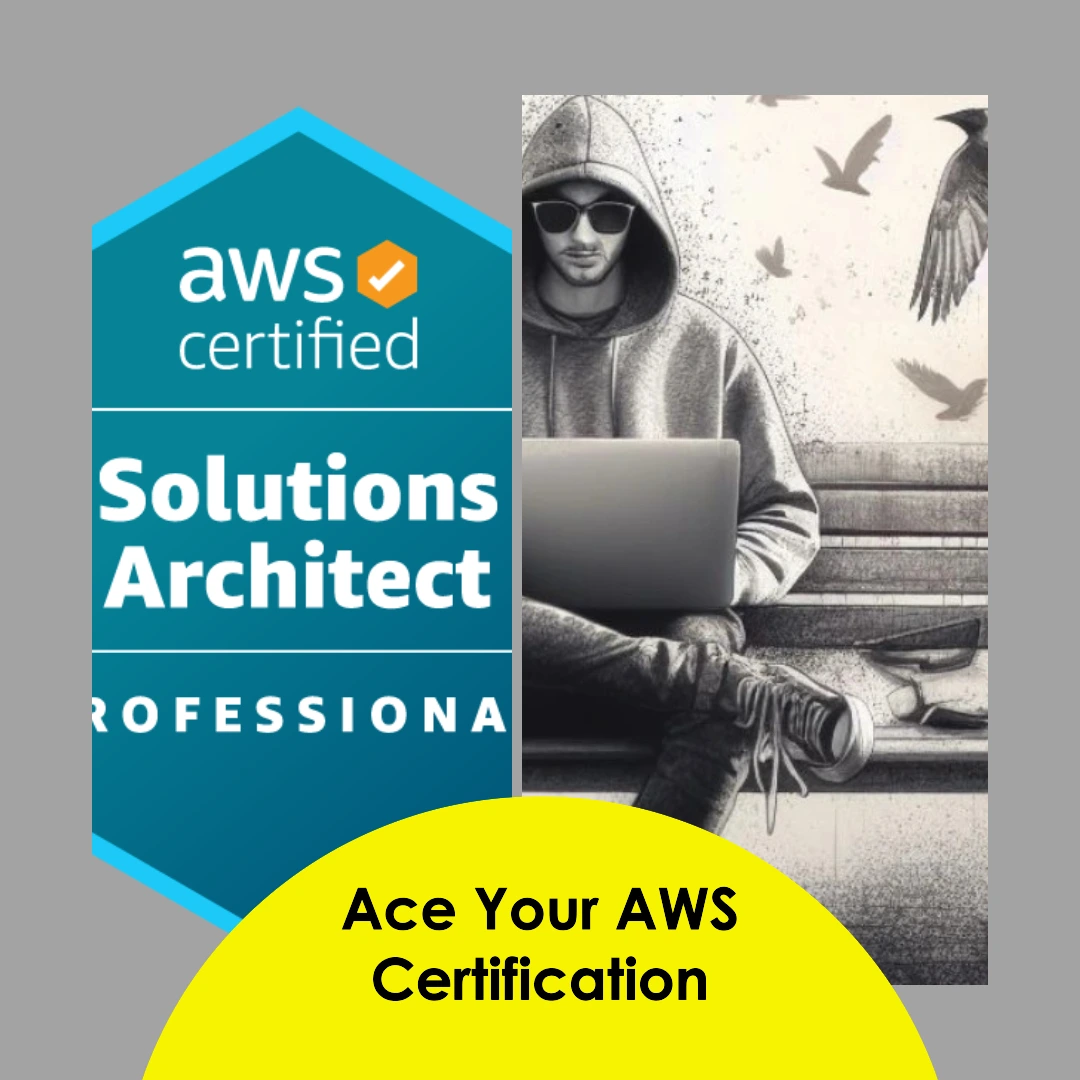
The AWS Certified Solutions Architect – Professional (SAP 02 AWS) certification validates advanced skills in designing and deploying cloud architecture on AWS.
What is AWS SAP-C02?
The AWS Certified Solutions Architect – Professional certification validates advanced technical skills and experience in designing and deploying cloud architecture on AWS. It is intended for professionals performing a solutions architect role with at least 2 years of hands-on experience using AWS.
The SAP-C02 exam tests your ability to evaluate architecture requirements and design optimized AWS solutions based on the AWS Well-Architected Framework. You will be evaluated on skills like architecting for organizational complexity, migrating workloads, and continuously improving solutions.
Key topics include designing scalable and secure networks, systems for high availability and fault tolerance, cost-optimized architectures, and automation strategies. Knowledge of core AWS services like EC2, VPC, IAM, S3, and Lambda is required.
The SAP-C02 exam has 75 questions and takes 180 minutes to complete. It is scored on a scale of 100–1000, with a minimum passing score of 750 (75%). There are no prerequisites to take the SAP 02 AWS exam.
Earning the AWS Certified Solutions Architect – Professional certification demonstrates advanced cloud architecture skills to design and deploy complex solutions on AWS. It is a valuable credential for IT professionals working in cloud and solutions architect roles.
What is the difference between AWS SAP C01 and SAP-C02?
The SAP-C01 exam focuses on evaluating architecture requirements and designing solutions based on the AWS Well-Architected Framework. The updated SAP-C02 exam covers newer AWS services and features like IoT, Machine Learning, EKS, ECS, and Fargate.
Both exams test skills like designing secure, reliable, cost-optimized networks and systems. However, SAP-C02 emphasizes migrating workloads, refactoring monoliths into microservices, and continuously improving the architecture.
SAP-C01 has 80 questions over 170 minutes, while SAP-C02 has 75 questions over 180 minutes. The passing score for both is 750/1000.
There is significant overlap between the exams. Passing SAP-C01 is still valid for 3 years. Existing SAP-C01 cert holders only need to pass SAP-C02 when it’s time to renew[1]. Those starting new should take SAP-C02 to validate the latest skills.
AWS Services for the SAP-C02 Exam
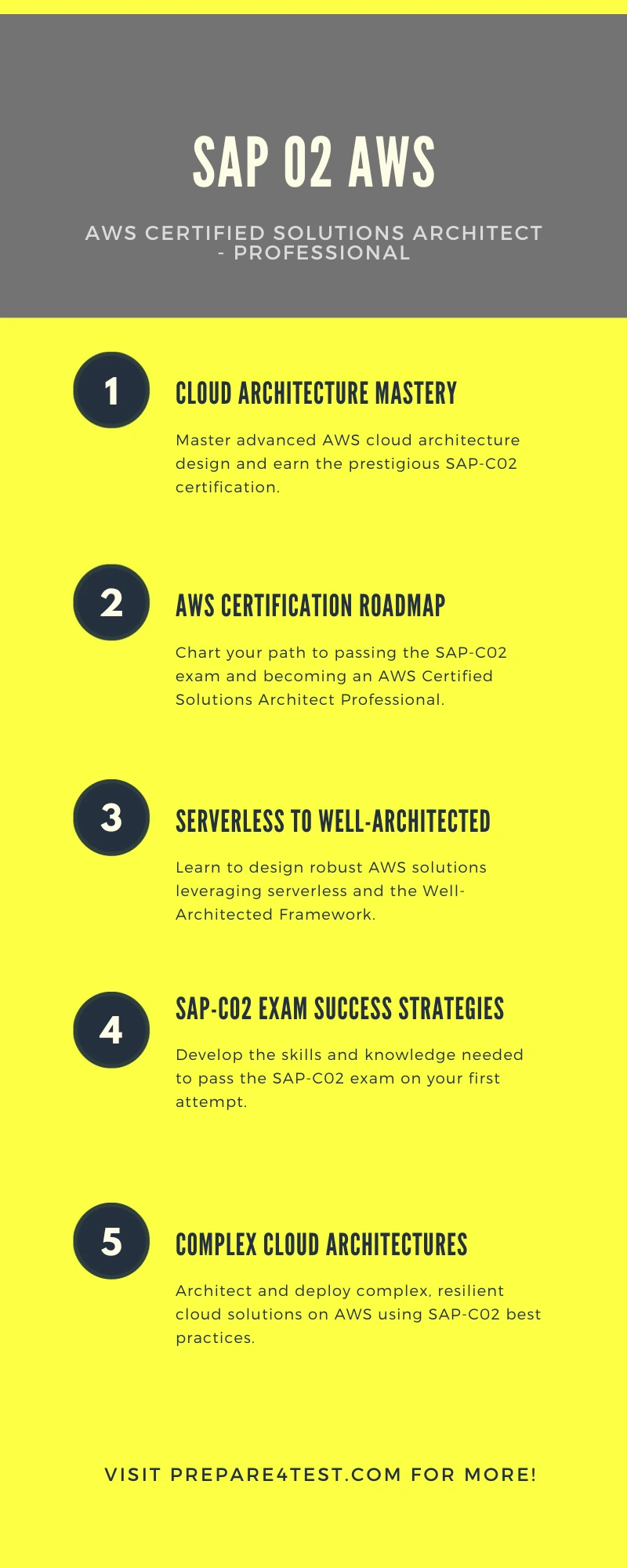
Amazon Virtual Private Cloud (VPC) allows you to provision a logically isolated section of the AWS cloud. Within a VPC, you can launch AWS resources in a virtual network that you define. VPCs give you control over the virtual networking environment, including selection of IP address range, creation of subnets, and configuration of route tables and network gateways.
You can use VPC to build a secure, scalable private network by creating public-facing subnets for web servers and private-facing subnets for backend servers. VPC security groups and network access control lists allow you to control inbound and outbound traffic at the subnet and instance level.
AWS Lambda allows you to run code without managing servers, paying only for compute time consumed. Lambda functions can be triggered by over 200 AWS services like S3 or DynamoDB to add custom logic. For example, resize images uploaded to S3 or validate data entered into DynamoDB.
Lambda scales automatically based on traffic, running code across multiple availability zones for fault tolerance. You can use Lambda to process real-time streaming data or implement backend services for mobile apps. Lambda supports multiple languages like Node.js and Python. The service manages all administration of compute resources including capacity, monitoring, logging, and security.
Amazon S3
Amazon S3 offers multiple storage classes optimized for different data access patterns like frequent access, infrequent access, and archival. You can set bucket policies to control access to data. Enable versioning on buckets for easy rollback and restore from unintended overwrites or deletes.
Server-side encryption protects data at rest and in transit. Use S3 Access Points to simplify managing data access at scale. S3 storage usage can be analyzed in CloudWatch and S3 Storage Lens to optimize costs. Apply lifecycle policies to transition objects between storage tiers based on age.
AWS Organizations
AWS Organizations allows centralized governance and management of multiple AWS accounts. Best practices are to create accounts based on workload types and group them into OUs (organizational units) by function like security, infrastructure, development, etc.
Apply common controls and security policies to each OU using service control policies (SCPs). Use tagging to track resources and enable automation. Enable AWS CloudTrail across all accounts to centrally log activity for auditing. Control access by integrating AWS Organizations with AWS IAM Identity Center. Share resources like VPCs across accounts using AWS Resource Access Manager.
Architecting for the Well-Architected Framework
Reliability Pillar
To build reliable systems on AWS, architect for automatic recovery from failures by implementing monitoring with alarms and triggers. Test recovery procedures thoroughly. Distribute requests across multiple smaller resources to avoid single points of failure. Right size resources and leverage auto-scaling to maintain optimal capacity.
Choose AWS services designed for high availability like S3 and DynamoDB. Apply redundancy across AZs and leverage multi-Region deployments for disaster recovery. Frequently exercise recovery processes. Automate responses to events. Follow these best practices to minimize downtime and ensure consistent workload availability.
Security Pillar
The Well-Architected Framework recommends a defense-in-depth approach to security with controls implemented at all layers. Protect your AWS environment by enabling traceability through logging and monitoring. Implement least privilege access with IAM roles and enforce MFA.
Safeguard network traffic with security groups, NACLs, and VPC endpoints. Encrypt data at rest and in transit. Prepare for events by having incident response plans that leverage AWS services like GuardDuty and Security Hub to quickly detect and remediate threats. Following these best practices will improve your security posture on AWS.
Cost Optimization Pillar
To optimize costs on AWS, start by analyzing spend and usage through tools like Cost Explorer and AWS Budgets. Look for idle and underutilized resources that can be right sized or shutdown when not in use. Choose the most cost-efficient AWS services and features for your workloads.
Leverage auto scaling and provisioned capacity pricing models to align usage with demand patterns. Implement automation to schedule resource start/stop and leverage Spot Instances. Tag resources to allocate costs and monitor usage trends. Following these practices will help maximize performance while optimizing your AWS spend.
Operational Excellence Pillar
Use infrastructure as code tools like AWS CloudFormation to automate deployment of resources in a repeatable way. Implement mature CI/CD pipelines to safely deliver changes frequently. Instrument systems for observability with logging and metrics. Monitor health via dashboards and set up alarms for notifications[3].
Automate responses to events using runbooks and playbooks. Regularly perform recovery testing. Follow principles like chaos engineering to surface weaknesses. Continuously improve processes. Automation, observability, and frequent small changes create operational excellence.
Migrating Applications to AWS
Migrating applications to AWS provides opportunities to optimize costs, increase agility, and leverage new technologies. There are several common migration strategies to consider:
Rehosting
involves lifting and shifting applications to AWS as-is, without changes. Using rehosting, you can rapidly migrate a large number of applications to AWS to meet data center exit deadlines or shift CapEx to OpEx. AWS provides tools like AWS Application Migration Service (MGN) to automate rehosting of virtualized and physical servers to EC2 or VMware Cloud on AWS.
Replatforming
migrates applications to AWS while performing some level of optimization, like using managed services. For example, you could replatform an Oracle database to Amazon RDS or replace FTP servers with AWS Transfer Family. This requires some code changes but unlocks benefits like auto-scaling, high availability, and managed administration.
Refactoring
involves rearchitecting applications to become cloud-native. With refactoring, you decompose monolithic apps into microservices and leverage serverless technologies like AWS Lambda. This is the most transformative but provides the most agility and scalability benefits long-term.
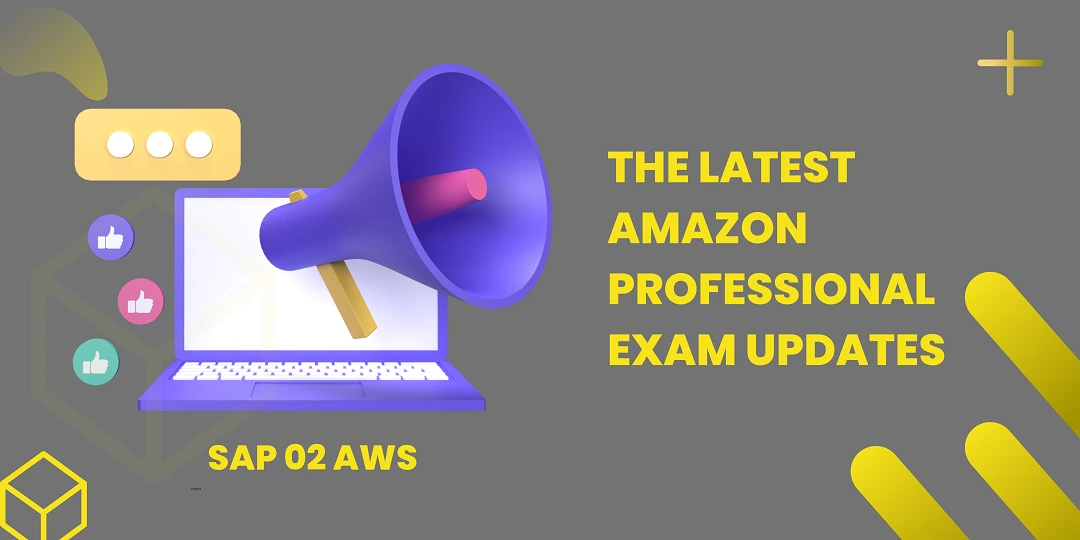
The best migration strategy depends on factors like timelines, costs, risks, and modernization goals. We recommend rehosting or replatforming initially to accelerate migration and minimize disruption. Refactoring can come later to further optimize and innovate on AWS. Leverage AWS tools and APN Partners to implement a migration factory for automation and scale. Migrating through multiple waves allows you to apply lessons learned to subsequent applications.
Bottom line
The SAP 02 AWS exam validates advanced skills in designing and deploying cloud architectures on AWS. Mastering core services like VPC, Lambda, S3, and Organizations is crucial. Follow the Well-Architected Framework pillars to build secure, reliable, performant, and cost-optimized systems.
When migrating apps to AWS, use multiple strategies like rehosting, replatforming, and refactoring based on factors like time, cost, and modernization goals. Start with rehosting to accelerate migration, then replatform for optimization. Refactor later to fully transform apps.
Focus your preparation on real-world scenarios and hands-on skills. Read AWS whitepapers to reinforce concepts. Take AWS training courses to gain practical experience. Leverage AWS tools like Well-Architected Tool, Trusted Advisor, and Cost Explorer to continuously improve architecture.
Architecting on AWS requires staying up-to-date on new services and best practices. Get certified and maintain expertise through continuous learning. Collaborate across teams and engage AWS solution architects. Keep honing your skills to operate at the cutting edge of a cloud.

